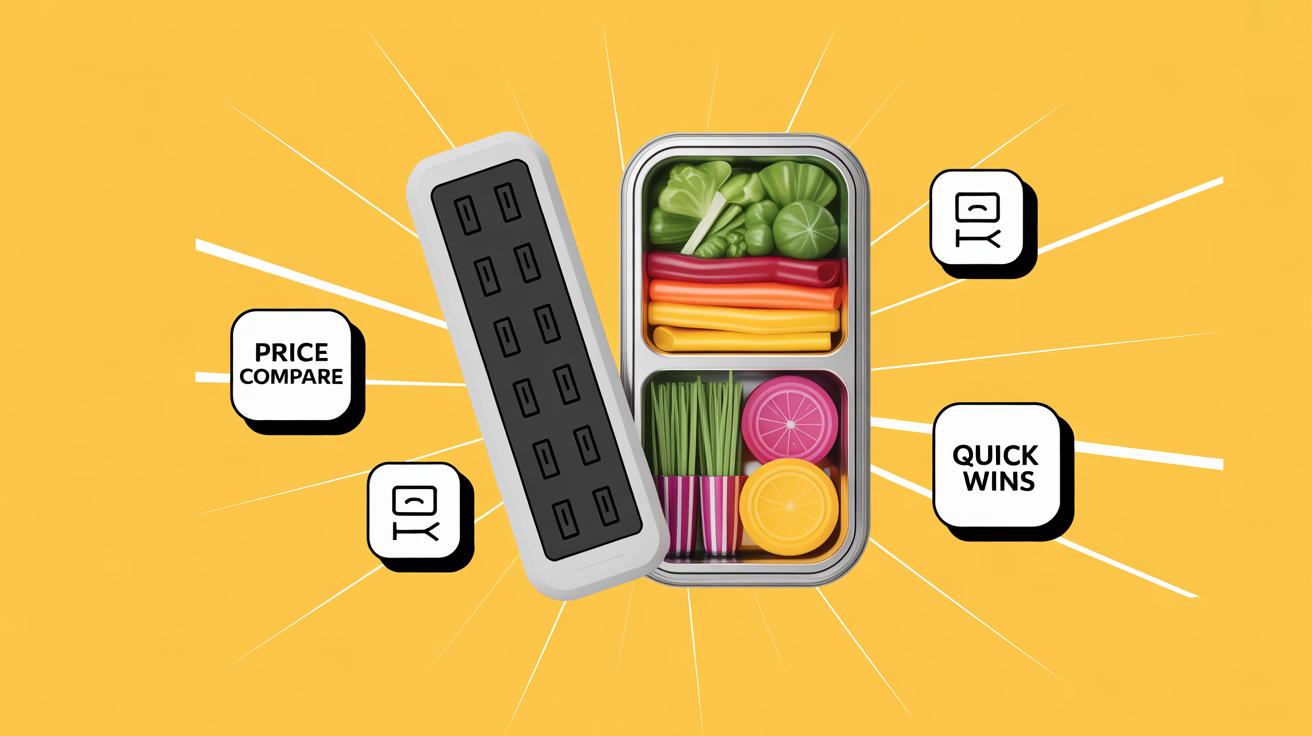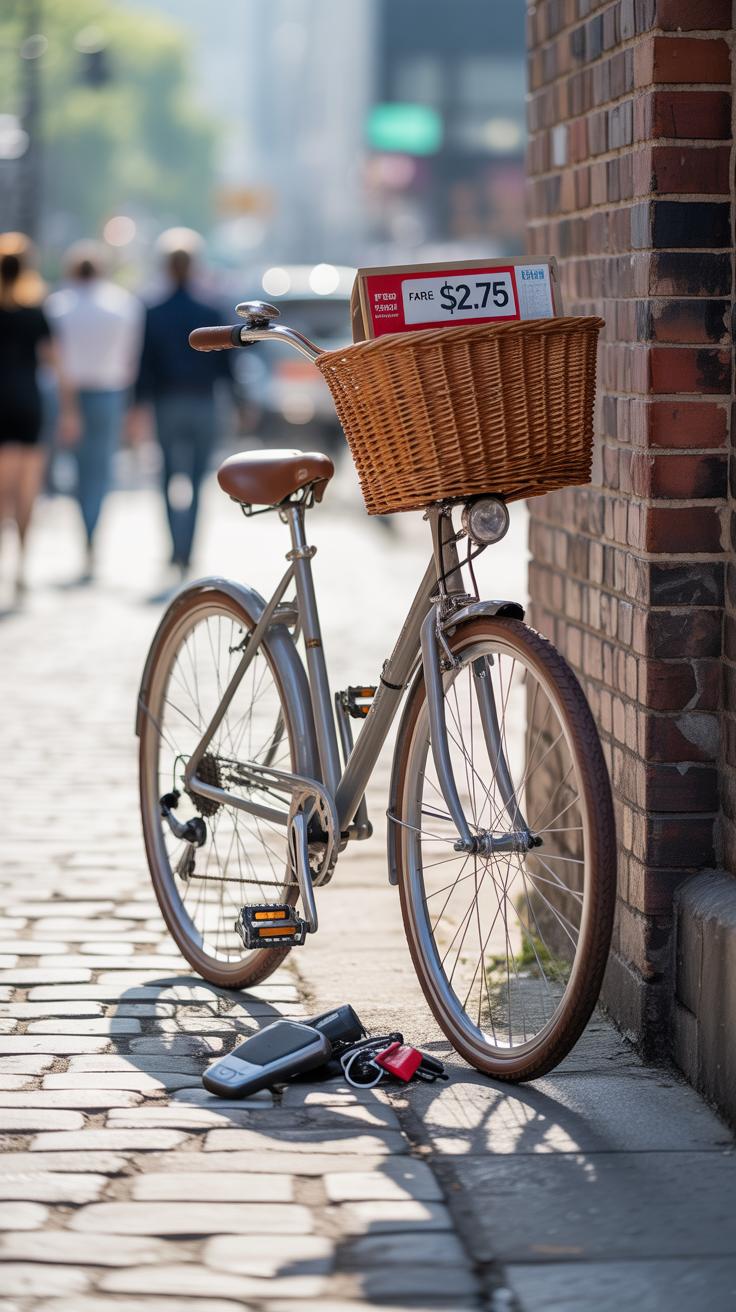Introduction
Financial life hacks are clever ideas that help you save money quickly and easily. You don’t need to work harder or earn more. Instead, you can spend less with small changes. These changes add up fast and make a big difference. This article shows you how to cut costs today with simple steps that everyone can follow.
By learning these hacks, you gain control of your money. You can stop overspending, avoid debt, and keep more cash for things that matter. You will find easy tips for budgeting, shopping, and home expenses. These life hacks aim to help you save without stress or extra work. Ready to spend smart and save fast? Let’s explore these financial life hacks step by step.
Creating a Simple Budget That Works
Budgeting feels like one of those things everyone says you must do, but maybe it’s easier said than done. Still, having a clear, simple budget is a surprisingly effective way to keep control over your money. It’s not about tracking every penny obsessively—at least not unless you want to—but about knowing roughly where your money comes from and where it goes. That awareness alone tends to cut costs without much extra effort.
Start by listing all your monthly income sources. Don’t forget smaller streams, like side gigs or occasional freelance jobs—they matter more than you might think.
Next, jot down all your expenses. This includes fixed costs like rent or loan payments, and variable ones such as dining out or utilities, which fluctuate. Seeing everything on paper can be eye-opening; it’s easy to overlook small expenses that add up.
Organizing expenses into categories—like groceries, bills, entertainment, transportation—helps you spot where your money leaks. You might realize, for instance, you’re spending twice as much on coffee as you thought.
Keeping the budget updated doesn’t have to be tech-heavy. Some prefer using apps, but a simple notebook or spreadsheet works well too. Pick a method that fits your lifestyle. The key is consistency—checking in regularly ensures you don’t fall back into old spending habits.
Budgeting means choices. It highlights what’s necessary and what can be trimmed. Sometimes, knowing exactly what you earn and spend can spark ideas to save that never occurred to you before. So why not try it? You could find yourself surprised by the possibilities.
Cutting Grocery Bills Without Losing Quality
Planning Meals Ahead to Avoid Impulse Buys
Making a weekly meal plan can really change how much you spend at the grocery store. When you sit down and map out your meals, you get a clear picture of what you actually need. Without a plan, it’s easy to throw extra items in the cart “just in case.” That’s where most of the overspending happens.
Try to base your list on what’s already in your pantry or fridge. This stops you from buying duplicates or letting food go to waste. It might feel tedious to plan each meal, but soon it becomes second nature—and saves money, no doubt.
Some people say meal planning limits spontaneity. I get that. Sometimes, I don’t want to be stuck eating what I planned days ago. Still, even a rough outline helps prevent those impulse buys that add up. You don’t need Michelin-star dining—simple meals with a solid shopping list do the trick and keep your nutrition intact.
Using Coupons and Store Deals Wisely
Coupons and store deals can cut costs, but only if used thoughtfully. Just grabbing every coupon you see might not help if you don’t actually use those items. It’s better to look for offers on products you already buy regularly.
Loyalty cards are often overlooked but can build small savings over time. Signing up might feel like one more thing to keep track of, but discounts on fresh produce or essentials add up in unexpected ways.
Check store apps or websites before shopping—they often list deals or digital coupons. Sometimes, combining coupons with weekly sales brings the price even lower. Yet, be careful not to buy in bulk just because of a promotion. You might save upfront but spend more if you end up wasting food.
Lowering Utility Bills with Small Changes
Cutting down on monthly utility costs doesn’t require big investments or complicated gadgets. Small adjustments in how you use electricity, water, and heating can quietly shrink your bills over time. For example, have you ever noticed how much energy a light left on in an empty room wastes? It’s surprising just how quickly those little habits add up.
Saving Electricity with Smart Habits
Turning off lights when you leave a room is the easiest step, but it’s one many forget about. Maybe it feels too simple to matter, but it does. Switching to energy-saving bulbs can lower electricity use—LED bulbs, in particular, last longer and use far less power than old incandescent ones.
Unplug devices that aren’t in use, too. Chargers, TVs, coffee makers—all draw some power even when off. I didn’t realize this until I started unplugging my phone charger after every use. Over a month, my bill dropped a tiny bit. It’s not massive, but it adds up, especially if you’re juggling multiple devices.
Reducing Water Waste to Save Money
Water leaks quietly drain your wallet. Fixing dripping faucets or running toilets can save gallons daily. Even small leaks count over weeks. Shortening showers by just a couple of minutes also lowers your bill—and it’s easier than you might think once you get used to it.
Consider installing water-efficient fixtures like low-flow showerheads or faucet aerators. They don’t cost a fortune and can make a noticeable dent in your usage. I tried a low-flow showerhead last winter, and I didn’t miss the old spray at all, while the water savings were clear on my bill.
Little changes in daily routines don’t feel dramatic, but when you add them together, the impact on your utility bills shows. What small step can you start today?
Smart Shopping to Avoid Overpaying
Shopping with a plan can save you more money than you might expect. When you know what you need and stick to that list, impulse buys tend to disappear. But even with a list, it’s easy to overlook smarter ways to spend—like comparing prices before you commit.
Comparing Prices Before Buying
Start by checking prices online and in several stores, especially for bigger-ticket items. Sometimes, the same product varies widely in cost depending on location or retailer. Use your phone while shopping in-store to scan barcodes or quickly search for alternatives. Don’t hesitate to take a moment longer; a small pause often pays off.
Buying off-season is another tactic. Think how winter coats drop in price as spring arrives, or how air conditioners get cheaper after summer. Planning ahead and buying when demand is low can cut costs significantly, though it requires some patience.
Taking Advantage of Sales and Cashback Offers
Sales can be tricky. Not every discount is a good deal—sometimes, prices are just raised beforehand or paired with items you don’t need. To spot genuine sales, track prices over time if you can. Cashback apps and cards add another layer of savings, but watch that the extra effort doesn’t tempt you into buying more than planned.
For example, I once got 5% cashback on a laptop through a credit card offer—easy savings on an item I’d buy anyway. Using these offers strategically means you get something back without spending more.
Shopping smart means being deliberate. Maybe it feels like extra work, but a bit of effort now makes your money stretch further later on.
Reducing Transportation Costs Easily
Using Public Transit and Carpooling
Switching up your travel habits can shave off a surprising amount from your budget. Taking buses or trains often costs less than owning and running a car daily. You might find monthly transit passes cheaper than gas and parking combined—sometimes by a good margin. Plus, it gives you time to catch up on reading or just zone out rather than stress in traffic.
Carpooling is another way to split costs. Sharing rides with coworkers or neighbors can halve your fuel expenses, and sometimes even less if you swap driving duties. It’s also better for the environment, which might not save you cash directly, but can feel like a bonus. Just make sure your schedules sync up—nothing wastes money like last-minute rideshares that don’t work out.
Maintaining Your Vehicle for Better Efficiency
On the flip side, if ditching your car completely isn’t feasible, keeping it in good shape is key. Regular oil changes, tire checks, and air filter replacements can push your car to run more smoothly and sip less fuel. I’ve noticed that skipping these routine tasks often leads to sudden, expensive repairs—so a bit of upkeep upfront avoids bigger headaches later.
Simple habits help too, like using the right tire pressure and not carrying excess weight. Even small changes can improve gas mileage noticeably. It’s tempting to overlook maintenance when budgets are tight, but ironically that’s when it hits hardest—when your car breaks down or guzzles gas. So, you might want to think twice before putting off those quick check-ups.
Cutting Entertainment Costs Without Missing Out
Finding Free or Low-Cost Activities
You might think enjoying your free time means spending a lot, but there are plenty of ways to have fun without breaking the bank. Local parks can be surprisingly entertaining—whether it’s hiking, picnicking, or just watching people go by. Museums often have free admission days or reduced prices at certain times, which makes exploring art or history more affordable than you’d expect. Community events like fairs, outdoor concerts, or markets offer chances to socialize and maybe even pick up unique crafts or foods for less than a typical night out.
Don’t overlook libraries either. They loan books and movies, but also offer workshops, classes, and sometimes even passes to attractions in your city. I remember borrowing a museum pass through my library and feeling a bit proud about not paying full price for what seemed like an expensive outing.
Choosing Affordable Streaming and Subscriptions
When it comes to streaming, the standard approach—subscribe to everything popular—can get costly fast. Instead, consider which services you really use. Maybe one month focus on a single subscription, then switch the next month. Sharing accounts with family or trusted friends can also slash costs—just be mindful of the terms of service. Some platforms now allow multiple profiles, which can be handy if tastes differ.
Basic or “lite” plans often suffice if you can tolerate ads or a lower video quality. Also, many services offer bundles—combining music, movies, or even ebooks—that cost less than subscribing separately. Is it strictly better to have everything at once? Possibly not. Sometimes, patience pays off—waiting for a service to cycle in the movies or shows you want instead of paying for instant access might save you money.
Saving on Phone and Internet Bills
Phone and internet bills often slip under the radar until they become a noticeable dent in your monthly budget. But there’s more wiggle room to save than most people realize. One of the first things worth doing is reviewing your current plan—are you really using everything you pay for? Sometimes, features like extra data or premium support sneak in unnoticed, costing you more without adding value.
Calling your provider and asking about discounts or promotional rates can lead to surprising results. I once found a lower-tier plan that matched my actual usage perfectly, saving me almost $20 a month just by asking. Negotiation feels awkward, but it’s rarely futile. Providers often prefer to keep a customer than lose one to a competitor.
Speaking of competitors, switching providers isn’t as complicated as it sounds. Take time to shop around—new customers often get better deals or waived installation fees. Don’t hesitate to check smaller companies; sometimes they offer solid service at a fraction of the big names’ costs. Just watch for contract terms; you don’t want to get stuck paying fees that cancel out your savings.
Lastly, avoid paying for extras you don’t need. Streaming bundles, device insurance, or premium add-ons can add up quickly. Keep it simple and aligned with your real habits, not what the advertisements suggest you need.
Building an Emergency Fund Step by Step
Having an emergency fund feels like a safety net—kind of reassuring even if it’s small at first. You don’t have to aim for a huge amount right away. The key is starting with whatever you can, no matter how tiny. This fund can keep you from digging into credit cards or loans when unexpected expenses pop up. Think of it as a way to protect your finances without stress.
Try setting small, doable goals. Maybe save your spare change from daily purchases or commit to putting aside a fixed amount each month—say $10 or $20. These steps seem minor, but over time they add up. What matters is consistency, not the size of the deposit.
One trick that works for many is setting up automatic transfers from your checking to your savings account. You won’t even feel the money leave because the process is invisible. It’s like paying yourself first, and you avoid the temptation to skip saving when life gets busy or bills pile up.
Still, it’s easy to procrastinate or think “I’ll start next month”—but what if next month never comes? Starting small and steady beats waiting for the perfect moment, which usually doesn’t arrive. An emergency fund isn’t just about money; it’s about peace of mind and a cushion that stops you from spiraling into debt when life throws a curveball.
Avoiding Debt Traps and Paying Off Existing Debt
Debt can sneak up on you in ways you might not expect. Credit cards often lure with easy spending but come with steep interest rates if you miss payments or carry a balance. Payday loans, though tempting in a crunch, usually cost far more than what it seems at first glance. They’re quick fixes that can spiral into bigger problems. It’s worth taking a moment to think twice before diving into these types of credit.
Recognizing which debts drain your finances the most can change how you approach your spending. Credit cards and payday loans top the list, especially when interest rates climb above 20 or 30 percent. Student loans and mortgages often have lower rates, but ignoring other obligations in favor of them can delay your financial recovery. Budgeting helps here. Tracking every dollar brings clarity and can block unnecessary borrowing.
When it comes to paying off debt, having a plan is crucial. The snowball method suggests tackling smaller debts first, giving you quick wins to fuel motivation. The avalanche method focuses on eliminating the highest-interest debts first, saving you money over time. I’ve tried both. Snowball worked when I felt overwhelmed, but avalanche shaved off way more interest costs. Maybe a mix suits you better.
Could setting aside even just a bit extra each month make a dent in your debt? It probably can. Small, consistent payments reduce principal faster, lowering future interest. It’s tempting to ignore debt when it feels endless, but facing it head-on with a strategy can free up your budget and ease stress faster than you might think.
Tracking Your Progress and Adjusting Your Strategy
Keeping an eye on your savings and spending isn’t just about jotting down numbers—it’s about understanding what those numbers really mean. Take a moment every week or month to look over your budget. See where your money actually goes, not just where you think it should. This can reveal surprising patterns, like how small daily treats add up faster than you expect.
Using apps or simple spreadsheets can make this review less of a chore. Try tracking tools like Mint, YNAB (You Need A Budget), or even a basic Google Sheet. These tools help keep all your finances in one place, showing your progress clearly. I found that visual charts motivate me to stick to my goals better than vague intentions.
But what if certain hacks just aren’t working? Maybe you aimed to cut dining out entirely but found it unrealistic. It’s okay to tweak your plan. Adjust the hacks that feel like a struggle and double down on small wins. For example, swapping one restaurant meal for a homemade one instead of eliminating dinners out completely might fit better with your lifestyle.
Ask yourself regularly: What did I save? What felt difficult? What surprisingly worked well? Your financial strategy should shift as your habits and needs evolve. Staying flexible may feel a bit messy at times but staying stuck doing what doesn’t work is worse.
Conclusions
Saving money does not have to be hard or boring. Using financial life hacks, you find easy ways to reduce your costs immediately. Every small hack you apply improves your money habits and helps you build a better financial future. The key is consistency and choosing hacks that fit your life well.
Remember that controlling your spending gives you freedom and less worry. Keep learning and changing your money habits one step at a time. Your wallet will thank you. Start using these financial life hacks now and see the difference in your savings grow before your eyes.
























